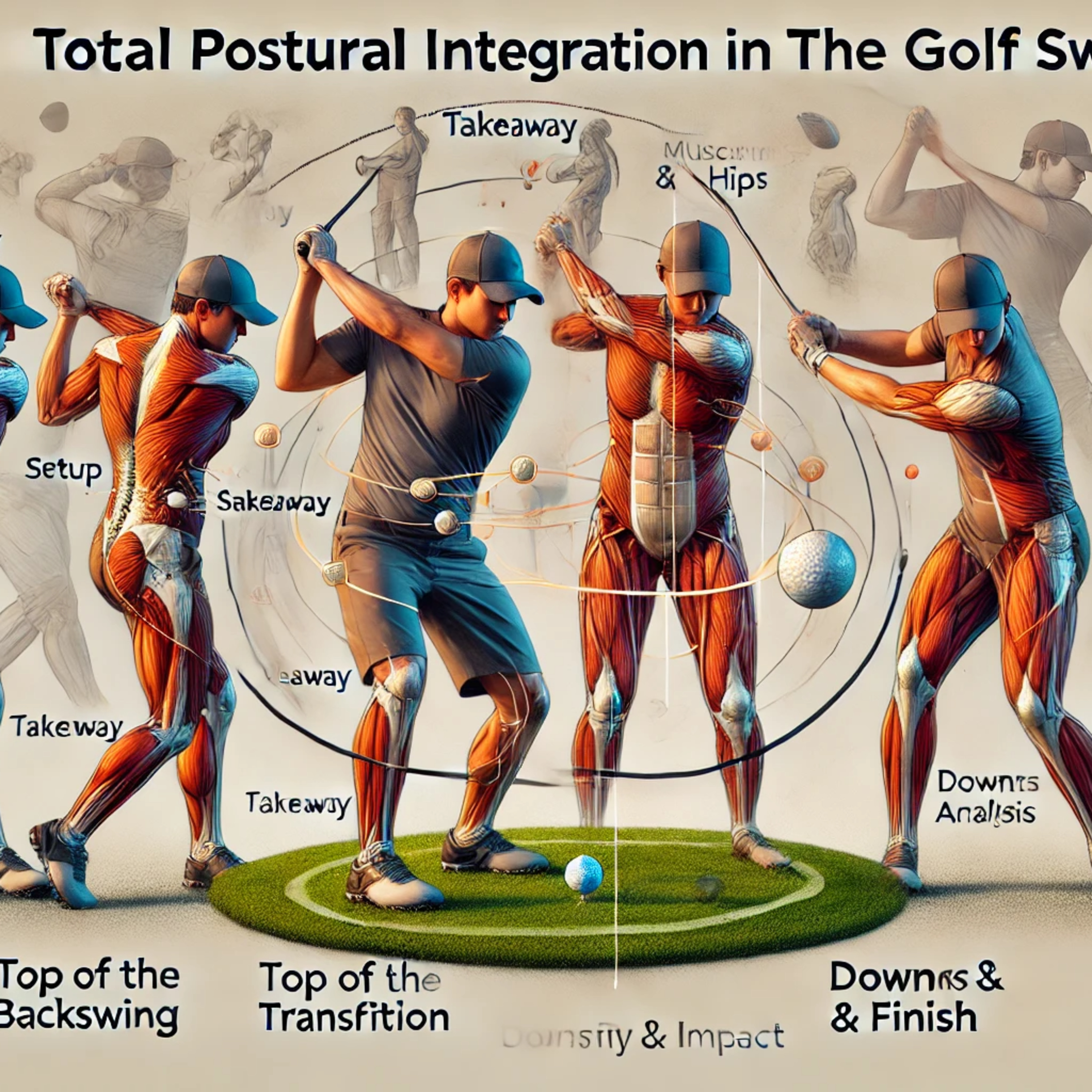#165 Total Postural Integration in the Golf Swing
- Author
- Golf247.eu
- Published
- Sat 15 Mar 2025
- Episode Link
- https://podcasters.spotify.com/pod/show/puttin-pro/episodes/165-Total-Postural-Integration-in-the-Golf-Swing-e2vpi2i
In this podcast episode, Henrik Jentsch discusses the importance of posture in the golf swing. He identifies six key steps and emphasizes the need to integrate the pelvis, thorax, and head. Jentsch analyzes a golf swing using 3D software to identify areas that can be improved through targeted exercises. He argues that better posture leads to a more powerful, repeatable, and resilient swing. The focus is on efficient movement and coordination of body parts to enhance performance and prevent injuries.
The episode offers golfers the opportunity to have their swings analyzed and receive personalized training programs. Postural weaknesses can significantly impact the golf swing, but there are ways to correct them.
Effects of Postural Weaknesses on the Golf Swing:
Inefficient movement: Poor posture can lead to inefficient body motion across the three movement planes.
Loss of power and control: Excessive hip rotation instead of a proper glide during the takeaway can cause a loss of power and swing control.
Lack of stability: Insufficient core stability can lead to an unstable swing, increasing the risk of injury.
Limited coordination: Poor posture can disrupt the coordination between the pelvis, thorax, and head, which is essential for a powerful and repeatable golf swing.
Compensations: The body naturally compensates for postural weaknesses, leading to a “well-compensated” movement that is not optimal.
Correcting Postural Weaknesses:
Swing phase analysis: The six phases of the golf swing can be analyzed individually to pinpoint weaknesses.
Targeted exercises: Specific stretching and strengthening exercises can be applied based on identified weaknesses. For example, the "cigarette butt" stretch and hip flexor exercises help improve hip mobility.
"Big Bang" exercises: For advanced golfers, a program with multi-purpose exercises can be developed to achieve multiple goals with fewer exercises.
Integration: The goal is to connect individual steps into a harmonious movement.
Postural endurance: It is important not only to adopt the correct posture but also to maintain it to transfer power effectively.
3D software analysis: Tools like Sportsbox AI can be used to analyze the swing and identify postural weaknesses.
Collaboration with professionals: Working with a golf instructor and fitness trainer is crucial for developing a personalized plan.
The "Three Amigos" in the golf swing—pelvis, thorax, and head—must be properly coordinated to develop a powerful and repeatable swing.
The Role of Weight Transfer in the Golf Swing Transition:
The transition is the phase where the golfer reaches the end of the backswing and begins moving back to the left. Here are the key aspects of weight transfer during this phase:
Initiating weight shift: In the transition, weight begins to shift to the front leg, setting up the downswing.
Postural programming: Along with weight transfer, the postural program for the hips must move in the opposite direction, requiring a lateral hip glide.
Kinetic energy: The stored kinetic energy in the right glute (assuming proper hip loading in the backswing) is activated, initiating the movement from the ground up.
Coordination: The transition demands a high level of coordination. The "Three Amigos" must work together to reverse the backswing sequence and initiate the downswing.
Stability: Stability is crucial to prevent injuries. A lack of stability can lead to movement issues and physical strain.
Efficient downswing: Proper weight shift in the transition phase sets the foundation for an efficient downswing.
- www.Golf247.eu
